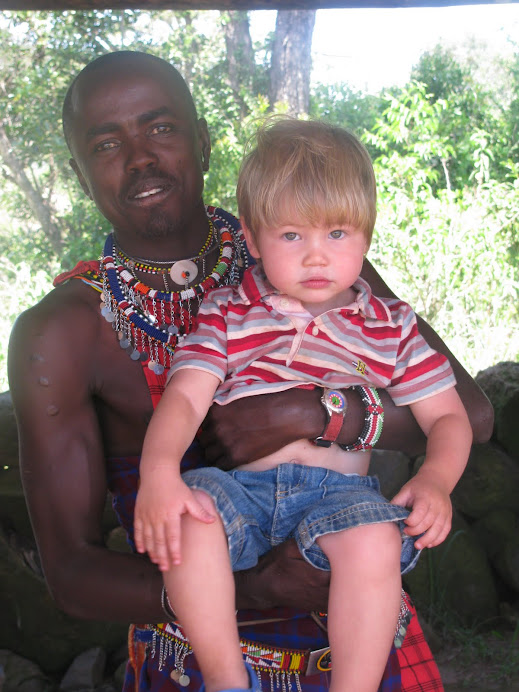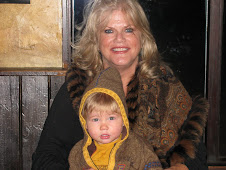I’m spending most of my day in interview mode with Joseph as my guide throughout southeast Kenya’s Mbrikani Group Ranch. First on my list is Chief Elder Ned, one of four elected by the Maasai to oversee the social activities and “upbringing” of young warriors following their initiation at around the age of 15 years. Ned, who my filmmaker friend Elena says is like Abraham Lincoln for the respect he commands and the spirit he imparts, is involved with both the Maasailand Preservation Trust (MPT) and the Predator Compensation Fund (PCF). (When a lion kills any livestock, the owner is compensated financially for the loss.)
Ned is famous among young and old warriors alike for standing up to the Maasai elders several years ago when the two conservation arms were taking baby steps. He declared, in the face of all tribal logic, that “lions should not be hunted anymore. There are too few left. We will kill them all.” And his words rang true for many of the old wise men. They listened, and the warriors coming up through the ranks have begun to learn new ways of proving their manhood (e.g., through competitive social activities like games and academic accomplishments).
Joseph and I then drive clear across the great, golden savannah away from the Chyulu towards Mt. Kilimanjaro to meet with Kayok, a chief of warriors. He is a diminutive man with a noble profile, aquiline nose and all. Kayok’s role is to chaperone the young warriors in a particular manyatta until they graduate from their brothers-in-barracks living to their own home and marriage. Much to my surprise, this chief not only has a cell phone – many Maasai do, it’s quite disorienting – but has also been to the States. I ask him what he liked best. “The zoo,” he replies in Maa, a statement that further startles me. Joseph translates: “Not because of what it is, but because it showed me that Americans are trying to save animals too.”
Before we leave, I am intent on connecting with the little children under Kayok’s care. As mother of a two-and-a-half year old, I have a soft spot for toddlers and do everything I can think of to tempt them towards me – crouching down to their level, whispering gently. The girls are having none of it; two of them begin to cry, unfamiliar with seeing a mzungu in this neck of the woods. But the the chief’s mother passes a boy through the car window and he sits in my lap, not moving a muscle except for lowering his head. I am delighted and press the top it with the flat of my hand, a greeting that Maasai children offer to adults as a sign of respect and recognition.
“Now you get to meet the Notorious Gangster,” says Joseph. “My best bad guy,” he adds, eyes twinkling, his smile broad and steady. All day, I’ve had the feeling of being with a rock star already as small crowds greets everywhere we go. Spilling through the Land Rover windows, they offer huge handshakes or a clumsy embraces. But it seems my young driver/guide has saved the best for last as we head to the nearest pub.
TO BE CONTINUED...
Saturday, June 26, 2010
Thursday, June 24, 2010
THE LION WARRIORS, Part 1
Welcome to that magical time of day in East Africa, late afternoon/early evening, when the heat comes alive the way we most associate with the middle of the day. It is stark and welcome and direct. I am sitting on the poolside patio of the elegant Ol Donyo Waus in the Chyulus, a conservation-minded lodge that does posh with a purpose. Here, linen, stone and wood seem to fold around you, and elephants appear to be within grasp at the watering hole below the golden flagstone terrace. The lodge nestles in the lap of a former volcanic range, looking out on nearly 300,000 acres of golden grass plains, the Twin Hills or Mau in Maasai (perfect reflections of one another, they are so proportional), and Mt. Kilimanjaro in the far distance, surrounded by marshmallow clouds in a grey-blue sky.
In contrast, I'm staying behind this sumptuous property at my friend Elena’s very basic camp (hello, sinkless) with her crew as they complete wildlife filming on THE LION WARRIORS OF KILIMANJARO. A Norwegian/Californian filmmaker who’s as gutsy as she is gifted, Elena invited me down to immerse myself in background research on what’s happening between the Maasai and lions in the Amboseli-Tsavo ecosystem.
The two “tribes” are at a very emotional juncture. For the first time, young initiates, who’ve just been circumcised and are training to become warriors, are not killing lions as part of the ritual. By embracing this new tradition (and there is significant resistance), the Maasai are now facing another tough dilemma. What do they do about lions in a severe, post-drought environment where their former four-legged trophies attack their manyattas?
These predators are killing prized cattle and shoats (sheep and goats) instead of their normal fare of wildebeest and zebra whose populations have dwindled considerably. How can the Maasai not turn back the clocks and start hunting the most famous of the big cats again? Which takes precedence -- conserving wildlife at potentially huge personal expense to the locals or preserving a way of life at all costs? Are they truly able to live side by side so that both parties can thrive?
Today I am caught full throttle in the middle of this duality. In pursuit of a kind of natural justice, Joseph leads the way. He is quintessentially tall, dark and handsome, a young warrior with long black lashes and a graceful bearing. He also works as a scout for the Maasailand Preservation Trust (MPT) in order to prevent lion killers from having their way. Joseph believes that the approximately 30 big cats left in the surrounding group ranches should be protected and spared. Many agree; some don’t.
TO BE CONTINUED…
In contrast, I'm staying behind this sumptuous property at my friend Elena’s very basic camp (hello, sinkless) with her crew as they complete wildlife filming on THE LION WARRIORS OF KILIMANJARO. A Norwegian/Californian filmmaker who’s as gutsy as she is gifted, Elena invited me down to immerse myself in background research on what’s happening between the Maasai and lions in the Amboseli-Tsavo ecosystem.
The two “tribes” are at a very emotional juncture. For the first time, young initiates, who’ve just been circumcised and are training to become warriors, are not killing lions as part of the ritual. By embracing this new tradition (and there is significant resistance), the Maasai are now facing another tough dilemma. What do they do about lions in a severe, post-drought environment where their former four-legged trophies attack their manyattas?
These predators are killing prized cattle and shoats (sheep and goats) instead of their normal fare of wildebeest and zebra whose populations have dwindled considerably. How can the Maasai not turn back the clocks and start hunting the most famous of the big cats again? Which takes precedence -- conserving wildlife at potentially huge personal expense to the locals or preserving a way of life at all costs? Are they truly able to live side by side so that both parties can thrive?
Today I am caught full throttle in the middle of this duality. In pursuit of a kind of natural justice, Joseph leads the way. He is quintessentially tall, dark and handsome, a young warrior with long black lashes and a graceful bearing. He also works as a scout for the Maasailand Preservation Trust (MPT) in order to prevent lion killers from having their way. Joseph believes that the approximately 30 big cats left in the surrounding group ranches should be protected and spared. Many agree; some don’t.
TO BE CONTINUED…
Subscribe to:
Comments (Atom)









